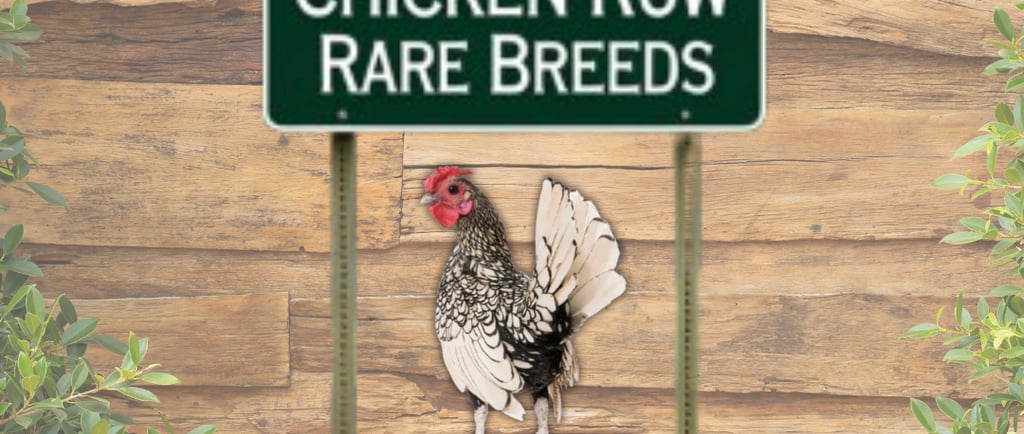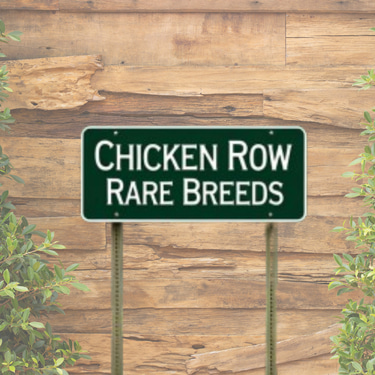Kikiriki
A rare Puerto Rican heritage bantam with vibrant spirit and historic roots
8/22/20252 min read


🐔 Kikiriki: The Tiny “Micro Chicken”
Small, colorful, and full of personality, the Kikiriki chicken is one of the smallest chicken breeds in the world. Sometimes called Micro chickens, these birds weigh barely a pound when fully grown — even tinier than most bantams. Originating from Central and South America, they are admired for their friendly nature, ornamental beauty, and ability to thrive in limited spaces.
📜 A Brief History
The exact origins of the Kikiriki chicken are not fully documented, but they come from tropical regions in Central and South America, where they were selectively bred for their size and charm. Unlike larger heritage breeds, Kikirikis were never intended for meat or heavy egg production. Instead, they were valued for their ornamental qualities, novelty, and pet-like personalities.
Their name, “kikiriki,” comes from the sound of a rooster’s crow in many languages, perfectly capturing their playful spirit.
📌 Breed Snapshot
Status: Rare, ornamental breed
Use: Pets, ornamental, novelty eggs
Egg Production: 1–2 very small eggs per week
Egg Size & Color: Tiny; cream to white
Weight: Roosters ~1 lb (500 g); Hens ~0.9 lb (425 g)
Temperament: Friendly, docile, highly social
Characteristics: Extremely small size, vibrant plumage, tropical origin
🐓 Why Choose a Kikiriki?
Space-Savers
At just around one pound, Kikirikis are perfect for urban and suburban backyards where space is limited.
Friendly Companions
They are known for their docile, social temperaments, making them great for families and beginner poultry keepers.
Beautiful & Unique
Their plumage can range from white and black to golden and multicolored patterns, adding ornamental appeal.
Cost-Effective
Their small size means they eat far less than standard chickens, making them inexpensive to keep.
🛠️ Care Considerations
Cold Sensitivity – Kikirikis are tropical by origin and not cold-hardy. They need shelter and warmth below 50°F (10°C).
Predator Protection – Their tiny size makes them more vulnerable. A secure, predator-proof coop and run are essential.
Diet – Require a balanced feed (16–18% protein) supplemented with grains, greens, or worms.
Egg Expectations – They are not production birds. Hens lay very small eggs and only one or two per week.
Family-Friendly – Roosters are less aggressive than other breeds, and hens often show strong maternal instincts.
🧬 Appearance at a Glance
Size
Roosters ~500 g (1 lb)
Hens ~425 g (~0.9 lb)
Plumage
Wide variety: white, black, golden, or multicolored
Personality
Calm, friendly, playful, very social
Eggs
Tiny cream or white eggs, novelty rather than utility
🧡 Heritage and Conservation
While not a formally recognized heritage breed, Kikirikis are gaining popularity as part of the movement toward diverse and ornamental poultry. Their novelty, friendliness, and ability to thrive in small spaces make them an attractive option for backyard keepers.
🧠 Final Thoughts
The Kikiriki is not a breed for egg or meat production — but that’s not the point. Instead, these “micro chickens” are companions, entertainers, and ornamental gems. If you want a chicken that thrives in small spaces, loves people, and adds charm to your backyard flock, the Kikiriki is a perfect choice.
Did You Know?
Kikirikis are even smaller than bantams.
Their name “kikiriki” mimics the rooster’s crow in many languages.
Despite their size, they act just like full-sized chickens — scratching, foraging, dust-bathing, and socializing.
